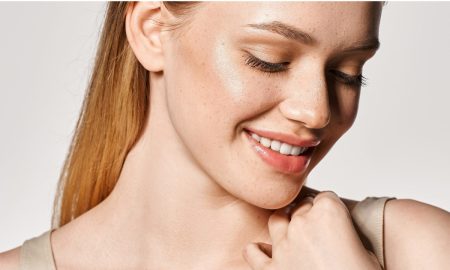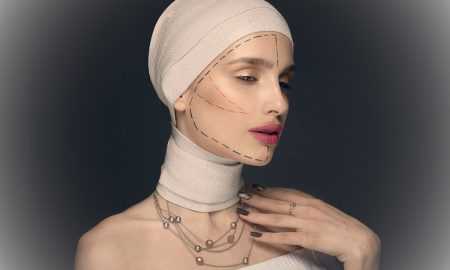 Photo Credit: Courtesy of Svitlana Sokolova/Shutterstock
Photo Credit: Courtesy of Svitlana Sokolova/Shutterstock
Iulianna C Taritsa, BA; Kirsten A. Schuster, MD, JD; Samuel J Lin, MD, FACS
Facial massage consists of sweeping motions across the face and neck with either hands or a facial massage tool such as a roller or gua-sha. Whether done at home or in the spa, the practice can feel heavenly. Many question, however, what are the true benefits.
Ultimately, the results depend on individual skin type and consistency. Technique and habitual routine are also important. For some individuals, facial massage may have benefits for improving skin appearance by decreasing inflammation and swelling in the area. Contrary to the popular belief that massage causes recurrent skin stretching and ultimately worsens wrinkles, limited data suggests that by increasing blood flow and lymphatic drainage, thinning and lifting the skin, and stimulating the building blocks your skin needs for improved structure and elasticity, facial massage may help decrease the appearance of wrinkles and fine lines to give a more youthful appearance to the skin (Miyaji et al., 2018; Caberlotto et al., 2017; Okuda et al., 2022, Caberlotto et al., 2017). In addition, massage to the muscles of the face may also promote stress relief – both by relaxing facial muscles and by reducing anxiety (Delaney et al, 2002; Cady & Jones, 1997; Field et al., 1996).
Those looking for more expansive benefits including changes in facial structures, however, are likely to be disappointed. While facial massage may reduce inflammation or swelling to such a degree that it appears to have an impact on certain features, including eye shape, true anatomical features are determined by underlying bone, muscle, cartilage, and fat, which massage cannot alter (Richmond et al., 2018).
For those looking to alter their facial features, there are several options. The least invasive involves the power of makeup. By playing with contour, highlight, eyeshadow, and false lashes you can create the appearance of lifted eyes, hollowed cheeks, and a slimmer nose. Unfortunately, these effects only last until your next shower. Longer-lasting options include the placement of filler and Botox, thread lifts, and surgical procedures to contour the eyelids and lift your brows. As these procedures are all invasive and carry their own risks, please consult with your preferred dermatologist or plastic surgeon to see if any of these options are right for you.
References
Richmond, S., Howe, L. J., Lewis, S., Stergiakouli, E., & Zhurov, A. (2018). Facial Genetics: A Brief Overview. Frontiers in genetics, 9, 462. https://doi.org/10.3389/fgene.2018.00462
Glasgold, M. J., Glasgold, R. A., & Lam, S. M. (2008). Volume Restoration and Facial Aesthetics. Facial Plastic Surgery Clinics of North America, 16(4), 435–442. https://doi.org/10.1016/j.fsc.2008.05.004
Delaney, J.P., Leong, K.S., Watkins, A., & Brodie, D. (2002). The short-term effects of myofascial trigger point massage therapy on cardiac autonomic tone in healthy subjects. Journal of Advanced Nursing, 37, 364-71.
Cady, S. H., & Jones, G. E. (1997). Massage therapy as a workplace intervention for reduction of stress. Perceptual & Motor Skills, 84, 157-158.
Field, T., Ironson, G., Scafidi, F., Nawrocki, T., Goncalves, A., Burman, I., Pickens, J., Fox, N., Schanberg, S., & Kuhn, C. (1996). Massage therapy reduces anxiety and enhances EEG pattern of alertness and math computations. International Journal of Neuroscience, 86, 197-205.
Miyaji A, Sugimori K, Hayashi N. Short- and long-term effects of using a facial massage roller on facial skin blood flow and vascular reactivity. Complementary Therapies in Medicine. 2018;41:271-276.
Caberlotto E, Ruiz L, Miller Z, Poletti M, Tadlock L. Effects of a skin-massaging device on the ex-vivo expression of human dermis proteins and in-vivo facial wrinkles. PLoS One. 2017;12(3):e0172624.
Okuda I, Takeda M, Taira M, Kobayashi T, Inomata K, Yoshioka N. Objective analysis of the effectiveness of facial massage using breakthrough computed tomographic technology: A preliminary pilot study. Skin Research & Technology. 2022; 28(3):472-479.
For more information, visit Dr. Samuel Lin's social media:























